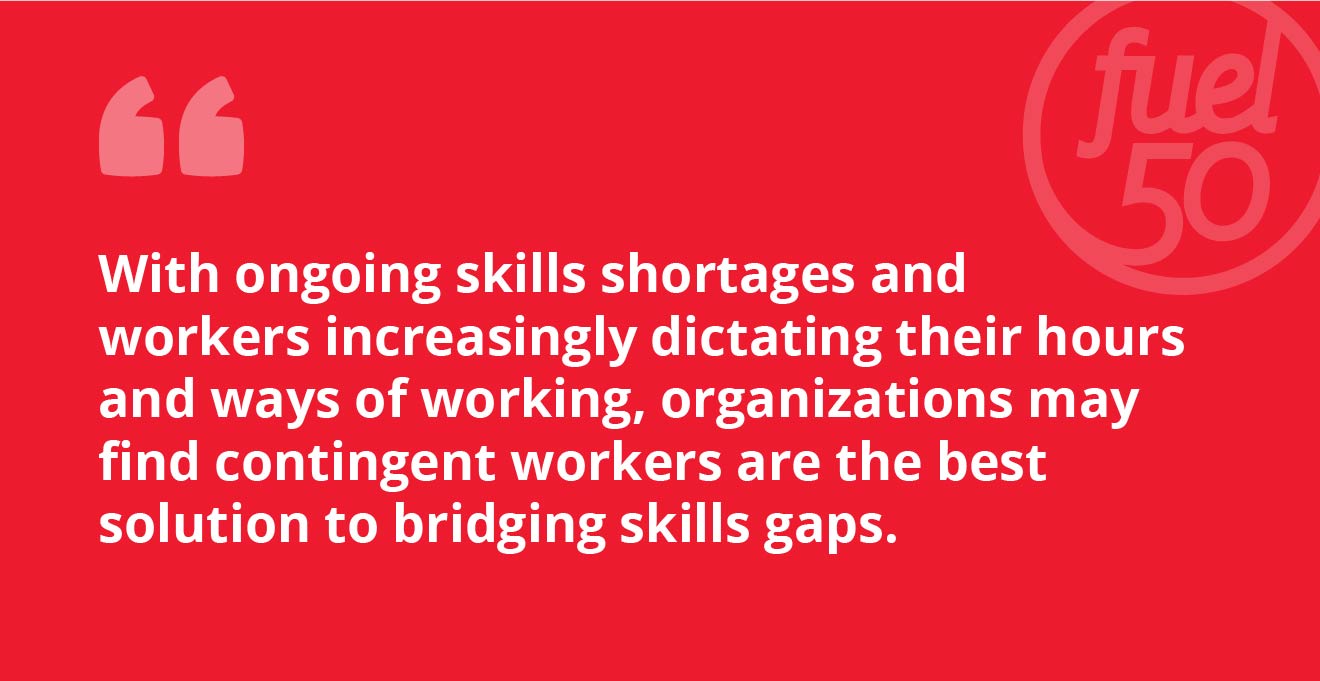With skilled talent in short supply and organizations looking for ways to cut costs while increasing productivity, the contingent worker is a viable solution. Let’s look at the pros and cons of the contingent workforce.
What are contingent workers?
Contingent workers, also known as freelancers or contractors, are hired on a non-permanent basis by an organization to perform specific tasks. Given they aren’t permanent employees there is no obligation to continue offering work once the project they were hired for has been completed.
Why organizations use contingent workers
Organizations are realizing that proactive skills development and continuous learning can set both their employees and the organization up for success. This includes shifting to a skills-first mindset and changing ways of working. In doing so, organizations often discover skills gaps within their workforce, here is where hiring a contingent worker skilled in hiring a contingent worker skilled in these areas is a strategic way to solve their skills shortages immediately. This means the organization can continue operating as normal.
Pros of contingent workers
- Immediate access to the skills you need. Once the organization and contingent worker have agreed to the terms in the contract and the worker has been briefed, they can start the project immediately.
- Can scale up or down as required. Organizations can increase or reduce the number of contingent workers as required for a project. Unlike traditional employees, once the project is finished there is no obligation to find further work for them.
- Cost effective. Unlike traditional employees who receive a salary and other benefits like paid time off or health insurance, contingent workers are paid only for the work they do which could be hours-based or a set amount for the project.
- Global perspective. Organizations aren’t just looking at local contingent labor; some look offshore to access the skills they need. This brings more diversity in ways of thinking and can help foster innovation

Cons of contingent workers
- They work their own hours. Unlike the traditional 9-5, contingent workers work their own hours and wherever is convenient for them. This may mean fewer overlapping days for meetings or check-ins.
- Surface knowledge of the organization. While they may be subject matter experts, contingent workers will not have the deep knowledge and understand the nuances of your organization which, depending on the project, may impact the work they deliver. Comprehensive briefing and additional checks and reviews may be needed to mitigate this.
- Communication challenges. Time zones, language barriers, and unclear briefs can all hinder progress so it’s important to establish clearly defined processes and deliver clear briefs from the beginning.
- Lack of control. Organizations are often nervous to outsource work as they are not in control of the outputs. It’s important that the contingent worker and project manager collaborate well.
- Data security. With GDPR, AI laws, and more, data security is a priority. Organizations and contingent workers must ensure there are stringent security measures in place and that they are across the data security laws of both the country they are in and the country they are outsourcing work to.
Final thoughts on contingent workers
With ongoing skills shortages and workers increasingly dictating their hours and ways of working, organizations may find contingent workers are the best solution to bridging skills gaps and completing projects in short timeframes. So long as you establish clear briefs, expectations and timeframes, embracing contingent labor can help your organization meet its deliverables without disruption.
Planning your skills transformation? Download our Skills Transformation Roadmap to uncover 4 steps to help chart your course to a future-ready workforce.






